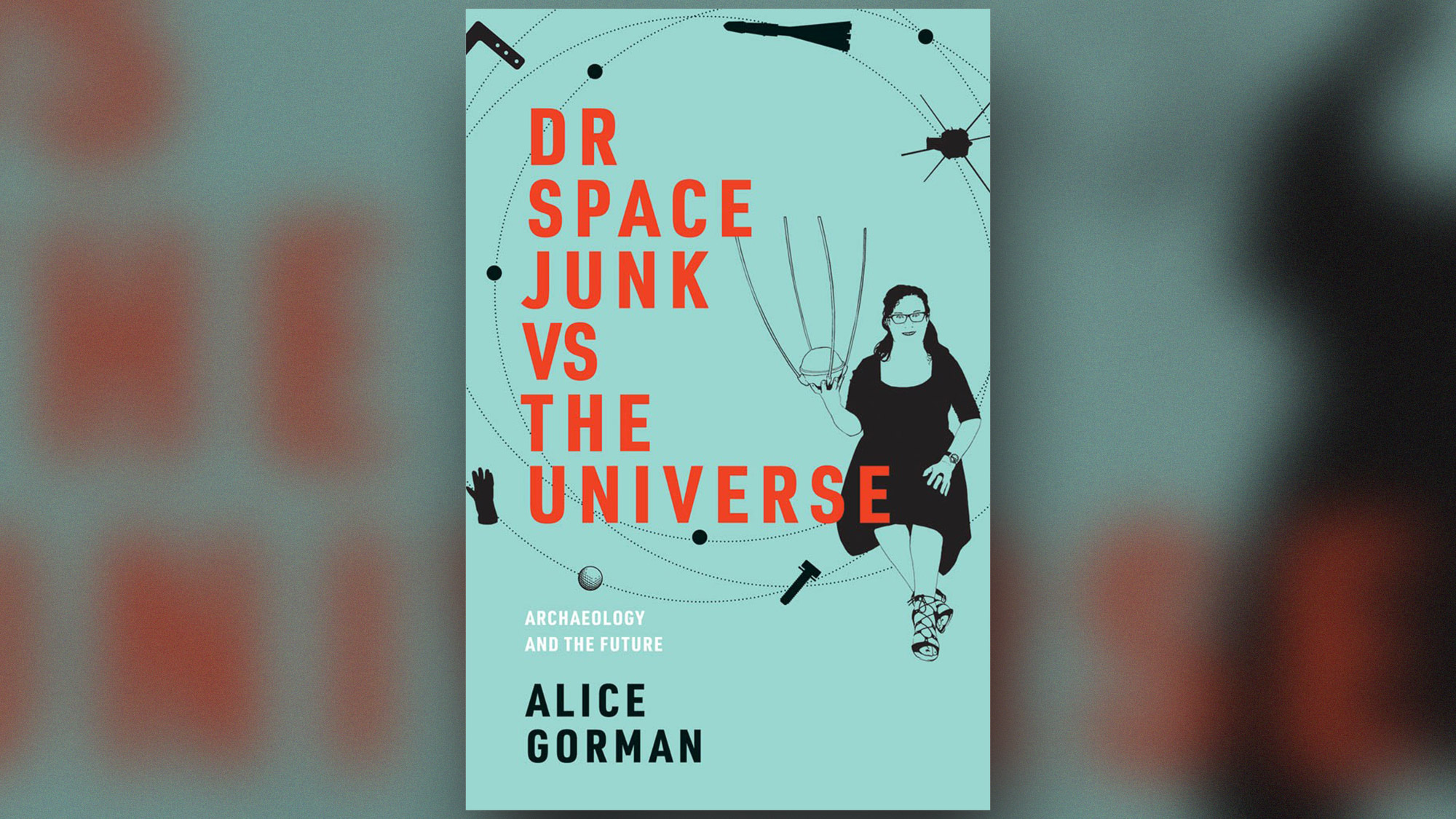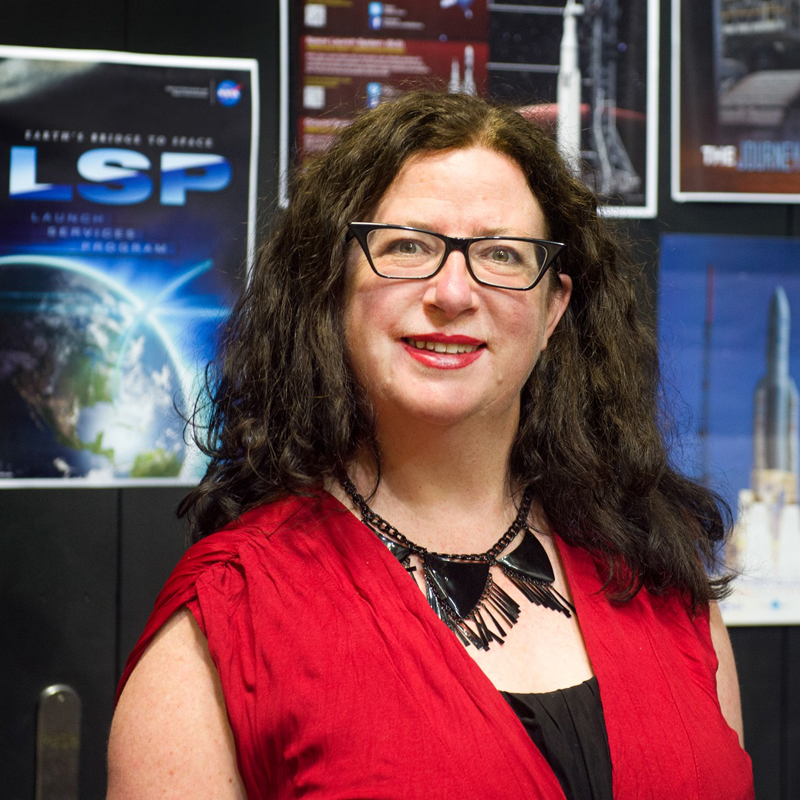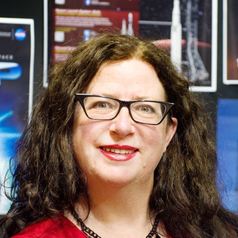Book Excerpt: 'Dr Space Junk vs the Universe' On How to Become a Space Archaeologist


In her new book, "Dr Space Junk vs the Universe: Archaeology and the Future" (MIT Press, 2019), Alice Gorman explores an archaeological perspective on spaceflight. But how does one become a space archaeologist in the first place?
Gorman was always interested in astrophysics, but was trained as an archaeologist after believing that her physics grade was too low to allow her to pursue her interest in space as well. But her habit of looking up at the stars never quite disappeared, and eventually, she found a way to merge her two passions, as she describes in the excerpt below.
(You can also read an interview with Gorman here.)
Excerpt from "Dr Space Junk vs the Universe" Chapter 1
This work sparked my interest in stone tools. Some excavations produced thousands of stone tools from sites soon to be swallowed up in an open-cut mine pit. In the Hunter Valley, there were glossy silcretes of rose and champagne pink, dusty mustard-yellow mudstones and brilliant white quartzes. While, to the casual observer, they might look like broken rocks, to the trained eye there were angles and features that betrayed the deliberate intent of human hands, and an insight to how people lived in this landscape thousands of years ago.
And also, sometimes, very recently. Occasionally, there was dark green bottle glass that had been deliberately flaked. It was much more difficult to distinguish this from natural breakage, but I learnt how to do it. This was evidence of how Aboriginal people had adapted to a new material introduced by the European invaders. Glass behaved just like a highly siliceous and brittle stone and produced an exceptionally sharp edge.
Related: The Weirdest Things Apollo Astronauts Left on the Moon
After a few years, I transitioned from 'dig bum' to stone tool analyst. But I thought the stories told about these artefacts were repetitive and often lacking in imagination. The beautifully manufactured 'backed artefacts', small blades with tiny flakes removed to make a steep margin, were always proclaimed to be spear tips and hence evidence of hunting. Hunting was evidence of meat-eating, and meat-eating was thought to be the catalyst for brain growth and bipedalism back before hominins left Africa. Since stone tools were the only technology that survived archaeologically for millions of years and across several hominin species, it was assumed that they were male technology. It said so on the box: man the toolmaker, man the hunter. Women gave birth, cowered in the backs of caves, posed as the model for a Venus figurine occasionally so that Palaeolithic 'man' could get his other rocks off, and maybe collected a worthless vegetable from time to time when the mammoth chops were running low. The sometimes openly stated and mostly implicit assumption was that human physical and cultural evolution was driven by male hunting. Was this the best we could do?
Get the Space.com Newsletter
Breaking space news, the latest updates on rocket launches, skywatching events and more!
A trip to the UK provided the catalyst to turn these thoughts into a more substantial project. In the Pitt Rivers Museum in Oxford, I found a set of flaked bottle glass tools used for body modification, made by women from the Andaman Islands, part of an archipelago in the Indian Ocean, in the 1870s. They had been collected by Edward Horace Man, who ran a 'home' for the Andamanese after British settlement started to encroach on their land and erode their society. Men didn't use stone tools in this period of Andamanese history, as stone and cutting activities were the realm of women. If they had, it's likely the colonial administrators would not have even noticed what the women were doing. At first I was interested in the technology transfer from stone to glass, but soon I realised there was something else far more interesting going on.
Andamanese women of the Aka-Bea and other groups started using bottle glass instead of the traditional quartz to carry out scarification and hair maintenance. Scarification is related to tattoo: scars are cut into the skin to produce a raised pattern, which is both visual and tactile. Often, the scars were first cut as part of an initiation ceremony. In the Andaman Islands, scarification was part of a complex cosmology in which height above the surface of Earth, and the physical density of objects, were related to smell within the thick forests of the islands. Scarification wasn't just about adorning the body: it was a mechanism for demarcating space and time. Yet, despite the central importance of this practice for constituting the social body of an Andaman Islander, the glass and quartz flakes were nothing special.
They looked quickly made and quickly discarded, the sort of thing that archaeologists would call 'waste' and pay no more attention to, while they were focusing on the fancy hunting tools everyone seemed so obsessed by. It made me aware that what looked like everyday tools could in fact be related to highly nuanced cultural practices.
These artefacts became the centrepiece of my PhD at the University of New England, which I started in 1994. I realised that if I could identify a pattern of residues and use marks which indicated a stone tool had been used for body modification, then this could be used to search for the earliest evidence of symbolic behaviour — and hence the emergence of behavioural modernity. I spent a year peering through a microscope at the Andamanese glass tool edges to determine if there was a consistent signature of skin, hair, oil residues, and faint polish and scratches. Happily for me, there was. Potentially, you could use this method to demonstrate that people had been modifying their bodies hundreds of thousands of years ago. But after finishing that work in 2000, I never wanted to look down another microscope ever again. I was broke, unemployed, and tired of living the life of an impoverished student. I took the first job I was offered, in Queensland. This was the setting for what happened next.
Lying in the gutter, looking up at the stars
My new job was Project Archaeologist for the raising of the Awoonga Dam, near the central Queensland town of Gladstone. I rented a lovely old Queenslander house. The house had the characteristic broad verandahs of that architectural style and a back garden with guavas, mangos, poincianas, and other marvellous semi-tropical trees. It also had an excellent bath, fabulous for soaking off the dirt after a hard day in the field.
I was frequently in the field with my team, all of them women from the three Native Title claim groups in the area. Surveying, monitoring earthworks, excavating, a whole bunch of stuff. In the height of summer, it could be very hot and sweaty work indeed. On one such day I came home, exhausted, clumped up the stairs in my steel-capped, acid-resistant boots, flung off my fluoro vest and hard hat as I entered the door, and went straight to the fridge for a delicious cold beer.
Now I have to confess I am slightly on the old-fashioned side in adhering to the principle of changing for dinner, whether one is at home, or in the field with only a flimsy dress which has been rolled into a ball and squeezed into some corner of the suitcase not occupied by Explorer socks. But sometimes it is just too much of an effort, and this was one of those days. The next stop after the fridge was the verandah, where I collapsed into a chair with my beer and sat, thinking of nothing much, looking up at the stars.
Related: NASA and Navajo Nation Partner in Understanding the Universe
Queensland doesn't have daylight saving, so it gets dark very quickly on summer evenings. The stars were already out and Venus was bright among them. I gazed up at the dark of space punctuated by luminous worlds, thinking about the Babylonian astronomers whose feats of observation so puzzled me as a child, and the constellation charts that were the keys to making meaning of the impossibly distant stars. The constellations were imaginary lines drawn between stars which had little basis in reality, but which turned the night sky into a place where you could read signs and symbols. Then something occurred to me: the bright points of light are not just stars. The sky is full of satellites and space junk too. There are artefacts in space, made by human cultures, and discarded in the same way as stone tools across the landscape. What lines could we draw between them to make meaning from this modern junk pile?
It was the second part of the thought that was critical, very much related to my task of managing the heritage values of more than 300 recorded Aboriginal and European sites within the inundation area of the Awoonga Dam. If there is human material culture in space, does it have heritage value? Does the Burra Charter apply to things that aren't even on Earth? I thought about this for a while, my beer forgotten. I decided I was going to find out.
It wasn't that no-one had thought of it before. In the 1970s, American historical archaeologist James Deetz said that one day we might be doing an archaeology of starships. William Rathje, famous for analysing the garbage of modern households in Tucson, Arizona, had written about the archaeological potential of orbital debris in 1999; and in New Mexico, Beth Laura O'Leary was making a catalogue of all the Apollo 11 artefacts left behind on the Moon. Greg Fewer in Ireland had suggested a heritage listing process for sites on the Moon and Mars in 2002. There was already a context for the archaeology of space. But for me at that moment, it felt as if something had clicked into place. My childhood connection with the heavens, which I'd broken by pursuing what lay beneath the earth, was forged again.
Later that year (2002), I finished the Awoonga Dam contract and took up a position as Senior Conservation Officer in the Heritage Branch of the Environmental Protection Agency (EPA) in the Central Queensland town of Rockhampton, the 'beef capital' of Australia. I moved from Gladstone to Rockhampton's nearby town of Yeppoon. After work and on weekends, I'd sit at my tiny desk with a dial-up internet connection and surf the web to make up for lost time. I made tables of spacecraft and launch dates; I read histories of space programs and trawled through sites like Encyclopedia Astronautica. And I became aware, for the first time, that Australia had a rich and diverse space history of its own. Australia had, in 1967, been the third (or possibly fourth) nation to launch a satellite from within its own borders! I was astonished by how little I knew of events that took place during my childhood.
In these early days, themes that have since become dominant in my work started to emerge. The Space Race and the triumph of the white, male American astronaut seemed an inadequate lens through which to view the development of space exploration, just like 'Man the Hunter' didn't really catch the complexity of human behaviour in the past for me. I was more interested in how everyday people engaged with space through projects like Vanguard 1, the oldest satellite still in orbit, and Australis Oscar 5, Australia's first amateur satellite in 1970. Both of these satellites relied on amateurs and enthusiasts — what we'd now call citizen or community scientists — to assist with tracking them and collecting data. This was more like the sort of story I wanted to tell. With my background in Aboriginal archaeology, it also seemed obvious to investigate how Indigenous people had experienced the Space Age, at places like the Woomera rocket launch site in South Australia. I thought about what an archaeological approach could bring to the study of space exploration. How would you apply Burra Charter principles to stuff in space?
Related: Peering at History from Orbit: 'Archaeology From Space' Author Talks New Book
I had to work out what my own parameters were too. I already had a reputation for tackling quirky research questions after my PhD on body modification, and I needed to make sure that my approach was rigorous. The first thing that anyone would think of would be 'aliens'. SETI (the Search for Extraterrestrial Intelligence) is a legitimate field of research, and I was as fascinated by it as the next person, but I couldn't afford to sabotage my version of space archaeology before it started. I decided to stay right away from astrobiology, the investigation of life on other planets, and SETI (I'm not so rigid about this now). I also decided to rule out astronomical heritage. Here there was a huge overlap with space science, so it was impossible to disentangle them to a degree, but one couldn't do everything. My focus was going to be satellites and space junk.
From "Dr Space Junk vs the Universe: Archaeology and the Future," by Alice Gorman, published by The MIT Press, 2019. Reprinted courtesy of MIT Press. You can buy "Dr Space Junk vs the Universe" on Amazon.com.
- Photos: Space Debris Images & Cleanup Concepts
- Space Junk Clean Up: 7 Wild Ways to Destroy Orbital Debris
- Skylab's Remains: NASA Space Station Debris in Australia (Photos)
Follow us on Twitter @Spacedotcom and on Facebook.
Join our Space Forums to keep talking space on the latest missions, night sky and more! And if you have a news tip, correction or comment, let us know at: community@space.com.

Dr. Alice Gorman is an internationally recognized leader in the field of space archaeology. She is an Associate Professor in the College of Humanities, Arts and Social Sciences at Flinders University, where she teaches the Archaeology of Modern Society.
Her research focuses on the archaeology and heritage of space exploration, including space junk, planetary landing sites, off-earth mining, rocket launch pads and antennas.
She is a member of the American Institute of Aeronautics and Astronautics, the Advisory Council of the Space Industry Association of Australia and the Australian Institute of Aboriginal and Torres Strait Islander Studies.
Her book "Dr. Space Junk vs the Universe: Archaeology and the Future" (2019) won the Mark and Evette Moran NIB People's Choice Award for Non-Fiction and the John Mulvaney Book Prize, awarded by the Australian Archaeological Association. It was also shortlisted for the Queensland Premier's Literary Awards, the NSW Premier's Literary Awards, and the Adelaide Festival Literary Awards.
Alice tweets as @drspacejunk and blogs at Space Age Archaeology.









